This past October 1st was the 30th anniversary of MTV Latin America, the Spanish version of the popular cable TV channel.
It was created for Hispanic-American audiences in the continent, after a few years of the concept show “MTV Internacional,” broadcast by Telemundo, and hosted by Cuban-American Daisy Fuentes, since the late 1980’s.
The original line up of VJ’s for the new channel was:

Alfredo Lewin from Chile,

Ruth Infarinato from Argentina,

and Gonzalo Morales from Mexico,

All alongside Daisy Fuentes.
Daisy used to appear mostly on weekends for the weekly Top 20 Countdown, until she eventually left the channel.
As I wrote on the mothership, 1993 was not a good year in my personal life. And by the months from August to October, I wasn’t quite aware about what was on TV.
I’d heard that a Latin American version of MTV was about to be launched. But I didn’t know exactly when it was going to happen. I think that my cable system put the channel up in November.
The network was based in Miami, and the first producer was Argentinian Alex Pels.
The first video broadcast was “We Are Sudamerican Rockers” (also known as “We Are South American Rockers”) by the Chilean band Los Prisioneros, from 1988:
Televisa had already created Telehit a couple of months before MTV Latino.

And although my siblings watched a couple of its shows after school…

… we soon turned to the latter, mostly because of the videos that were aired, the VJ’s were really good… and I must say, the promos were creative and original.
I remember some of the videos that were on heavy rotation by the last months of 1993:
Smashing Pumpkins
“Today”
Björk
“Human Behaviour”
Culture Beat
“Mr. Vain”
Spin Doctors
“Two Princes”
From the very beginning, the channel was mostly rock oriented. So, alternative, grunge, and other such subgenres were very successful.
And of course: the Latin American bands that had the most rotation were rock bands.

One of the bands that had big popularity in those years was Café Tacvba, with songs from their critically acclaimed album “Re”, released in 1994.

Another band that benefited from the channel was La Ley.
One of the things that I used to like about the channel was that almost all of the countries in Latin America could know what everybody else was doing.
- The Argentinians knew the Mexican acts…
- The Mexicans knew the Argentinian acts…
And on the other side: Chilean and Colombian bands gained better recognition.
Some the channel’s most popular shows were:

Conexión MTV

Headbangers

MTV Clásico

and Nación Alternativa.
There wasn’t yet a Latino version of MTV News. Most of the information came from the MTV mothership. Argentinian Javier Andrade was later incorporated by 1995 to present the version of MTV Latino News.

I remember that the coverage of Kurt Cobain’s death in 1994 was almost broadcast in real time.
The same year, the MTV Latino Unplugged shows began.

The first one was with Los Fabulosos Cadillacs.
The next years we saw the Caifanes breakup after the album cycle of “El Nervio Del Volcán” ended and making the second overall MTV Unplugged. Sadly they went on a bitter note.

Later, Soda Stereo‘s ended in similar circumstances. (However, ten years after they broke up, they did do a farewell tour.)
I think that the network’s quality declined mainly for a couple of reasons:
One was the regionalization. This meant that they wouldn’t broadcast from Miami anymore, and led to create a “North signal” from Mexico, and a “South signal” from Argentina. Everything was more local- focused.
The other reason was the big return of bubblegum pop from 1998-1999, which put artists from this wave on heavy rotation. Audiences were not happy with this.

One of the last things that I used to watch on the channel was “Daria.”
But I only saw the series finale online many years later, because I gradually stopped watching the channel.
Firstly because I started college, and also because there weren’t good shows to see. The same thing happened to the VJ’s – it was just not the same anymore.
The fate of MTV Latin America was similar to the MTV mothership:

Throughout the years the videos were replaced with reality TV, and shows like Acapulco Shore (which: thank God I’ve never seen.)
And other adaptations are basically trash.
The first years of MTV Latino were my company in my teenage years.
I heard great music in those years and it gave my siblings and I great memories, besides it was what hat my then friends and I had in common.
It was a great era.
Let the author know that you liked their article with a “Green Thumb” Upvote!
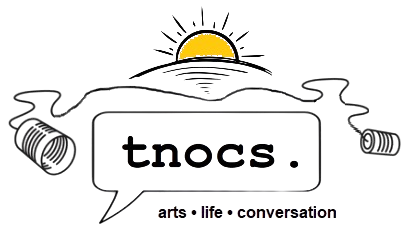
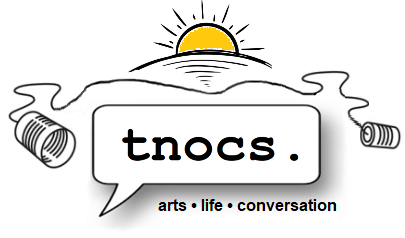
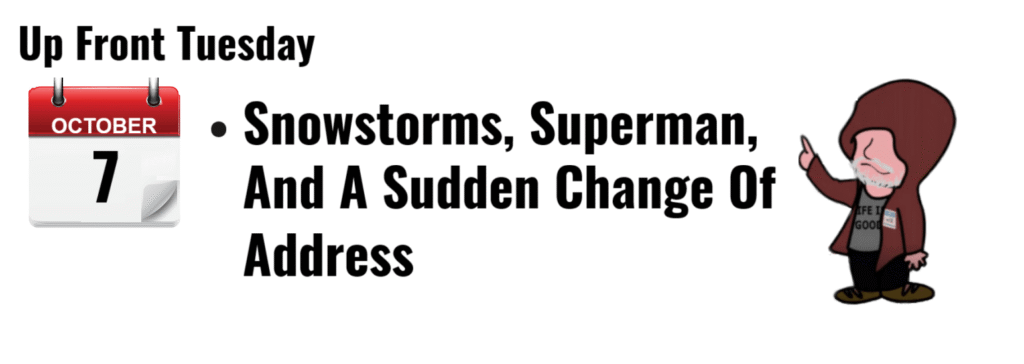

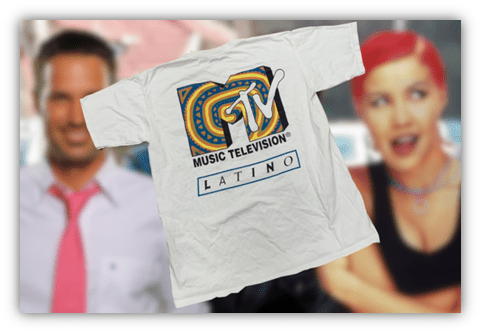
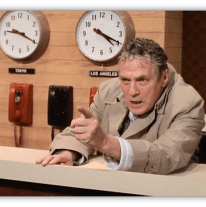
Thanks for this look, Edith, at music video life internationally. It is sad that the cycle was the same — from the heady excitement of the new to the resignation to “reality TV.”
You talked about Cobain’s death and MTV Latino’s coverage. Was the coverage of Selena’s death similar or different?
The thing is @Chuck Small, that Tex-Mex, Música Grupera or Regional was like a separate entity in Latin music. I can say that by the time of her death, Selena wasn’t fully known in Mexico, even when she had a cameo in a popular telenovela in 1994 and her videos were played in “MTV Internacional”.
As it was mentioned, the channel was rock oriented, and the producers and creative people were mostly from Argentina, so probably they didn’t think it was that relevant if she wasn’t known in the whole continent.
However, Univision and Telemundo were broadcasted over here, and they had the full coverage. The prime time news in Mexico also reported the death, but I think the former networks were more involved in the coverage.
This is fantastic. I can’t decide if my life is so much better or far worse, now that I know of the existence of Acapulco Shore. La Situación anybody?
I wasn’t a huge MTV person, but I do recall 3 out of those 4 English videos you mentioned. “Today” was a classic with the ice cream truck and just an amazing song. Bjork’s “Human Behavior” just blew me away. It was like nothing else out there. Those two right there are two of the best songs of the 90s, IMO.
I like hearing about what was going on musically in other cultures at the same time as here. The Latin trends seem markedly different than what we encountered. I don’t recall a bubblegum pop trend in English in the late 90s, though it could have happened.
Great job. More please.
Thank you for your words @rollerboogie. Even without watching ever an Acapulco Shore episode, I’ve heard against my will, the names of a guy known as “Jawy” and a woman named Manelyk, that’s all.
By 1988, I imagine that Mick Jones and Joe Strummer would be envious of Los Prisonieros. They’re clearly influenced by The Clash, but they embody so much of what made them exciting.
The only band mentioned here that I know is Cafe Tacvba, who I love.
If you were to write more about your favorite Rock o Pop en Español acts, I would totally be on board!
Thank you for that Phylum! I’ll see what can I do.
Thanks for filling in a hole in my music history education. I know next to nothing about South American music, aside from Sepultura, Astrud Gilberto, and Chico Science.
How were, say, Mexican and Argentinian music different? Was one more pop or more rock than the other?
Is this research for your ongoing series?
LOL, could be! I have very little info on the non-English speaking world and wasn’t planning on covering South America, Africa, or Asia. We’ll see.
I think since the 80’s the thing that made them different is of course, the background of every country. You know, Spain (which was also included in the “Rock En Tu Idioma” movement from mid 80’s), Chile and Argentina were gradually freed from their dictatorships, so critics tend to think that Spanish and Argentinian bands had better songs and quality. In Mexico, we had an imperfect democracy, and some of the bands were produced by labels that were more pop oriented and commercial enough to appear on TV and be played on the radio.
For example, Soda Stereo were heavily influenced by the Brits. In the first album of Caifanes, they were sort of influenced by The Cure, but also they used elements from our local culture and they created a unique sound.
In the 90’s the fusions and creativity were wider and richer and I think each country embraced their own culture.
By the way, while I was doing my research, I read that most of this music play on MTV was known as “alterlatino”. I don’t remember that I heard that word back in the day, but looking back, it makes sense.
Excellent, thanks! I need to look into Soda Stereo. I’ve heard the name but have never heard them.
Also, my wife and I have Mexico City and Buenos Aries on our list of places to visit, so I should learn something about them beforehand.
Bit of background reading on Soda Stereo. Soon as I saw the name I remembered reading this article about them earlier this year. Very good reminder that there’s a big world out there beyond the confines of our English speaking music markets.
https://www.theguardian.com/music/2023/may/17/soda-stereo-argentina-biggest-band-rediscovery
I had no idea the rise and decline of MTV was similar in multiple regions. When I lived in the Middle East I had a satellite TV, and used to watch MTV Asia which was out of India. It was in English, but mostly Indian music (which is where I discovered Amitabh Bachchan’s “Kahbi Kahbi”, one of my favorite songs of that period, produced by Bally Sagoo. I’d share it with you on here, but the only copy of it on YouTube is horrible.
I also watched France’s MCM (Monte Carlo Music), which was their response to MTV Europe, which is where I discovered Ophelie Winter’s album.
https://youtu.be/gmuyfiJKFaA?si=q4KXFXW9LJUKqvT-
Hi guys, thank you for the feedback I’ll answer you one by one.
Author’s note: I’m pretty sure that by November 1993 my cable company was already broadcasting the channel because I remember that I also saw the “I’d Do Anything For Love …” video by then.
I made a small list of recommended songs (some based on my personal tastes and others based on an album called “Conexión MTV”) that didn’t made the final cut. I’ll try to post this later.
Here it is:
Recommended music:
La Portuaria “Selva”
https://youtu.be/n4UkKwPVHkU?si=yY1tJ_l9EKMyMAS2
Café Tacvba “Las Flores”
https://youtu.be/zJvMwTgWcP0?si=PwLIIBayYPRNGUQu
https://youtu.be/gJ0mp6oNdiY?si=2k-t75MemQ0cClJA
Mano Negra “Señor Matanza
https://youtu.be/eBB7HeShhAg?si=Rgk2Dq49BLIZSEKb
Aterciopelados “Bolero Falaz”
https://youtu.be/qgU-rmenGAg?si=1UmtV7rrlJgDY0C6
Azul Violeta “Solo Por Hoy”
https://youtu.be/d6_9Tt1ZgKs?si=wqDYQFQTtdgVa2_F
Os Paralamas Do Sucesso “Uma Brasileira”
https://youtu.be/MhWzW1eFEbQ?si=rmbyMRimuiFCCPql
Editors note:
With regard to the launch date of the MTV Latino channel, Edith G had cited “November“ in her article text. I always do a little fact checking here and there, not because I don’t trust our authors, but I just like to try to confirm things, and get things right.
Anyway, my research said that it was December 1 for the launch of a channel, so I was was the one that flipped it over to December.
But I think we’re going to defer to Edith G on this one, because clearly, she has a great memory.
Well done- and November, it is!
Thank you @mt58, I already posted the list of songs that I recommended, but I guess it was a filter or something because I can’t see it.
I’m trying again, I don’t know if the restrictions in the Café Tacvba video didn’t allow me to post before.
Recommended music:
La Portuaria “Selva”
https://youtu.be/n4UkKwPVHkU?si=yY1tJ_l9EKMyMAS2
Café Tacvba “Las Flores”
https://youtu.be/gJ0mp6oNdiY?si=2k-t75MemQ0cClJA
Mano Negra “Señor Matanza
https://youtu.be/eBB7HeShhAg?si=Rgk2Dq49BLIZSEKb
Aterciopelados “Bolero Falaz”
https://youtu.be/qgU-rmenGAg?si=1UmtV7rrlJgDY0C6
Azul Violeta “Solo Por Hoy”
https://youtu.be/d6_9Tt1ZgKs?si=wqDYQFQTtdgVa2_F
Os Paralamas Do Sucesso “Uma Brasileira”
https://youtu.be/MhWzW1eFEbQ?si=rmbyMRimuiFCCPql
Aterciopelados is great too!
Cafe Tacvba was on live American television. It had to be Letterman, but I can’t find any evidence of it. I bought s/t. I like “Maria”.
I was psyched when Francisca Valenzuela appeared on Elvis Costello’s Spanish Idol. I like Chilean history. Violetta Parra was my entry point for the country’s cultural side.
And I second the greatness of “Bolero Falaz”.
This is good stuff, Edith! I know VJ Daisy Fuentes from her time as a co-host of America’s Funniest Videos in the late 90s. That’s about it.
It is a funny thing to think of how much music exists in the world that I know nothing about. Maybe I wouldn’t like a lot of it…but even if I only liked 1% of it, imagine how much cool music I’m missing out on!
We appreciate the Latin perspective.
I seem to recall that Daisy Fuentes was everywhere at one point.
Illuminating, Edith! Although I don’t recognize many of the artists mentioned here (I promise to dip at least one toe in la agua), I do remember Daisy Fuentes’ clothing line. (?)
Thanks for this Edith. Fascinating to read of the differences and similarities of MTV across regions. As others have said, sad to see that one of those similarities is in the way it declined by moving focus to reality TV.
I had a friend at uni in the mid 90s that would tell us how great The Real World was and tried to get us into it – MTV showed it here as well. It was like nothing else on TV, you got to see the real lives of these young Americans. Little did we know where that would lead us to. I try not to succumb to the phrase that it was better back in the day but I can make an exception for most reality TV.
Great that you have the memories of when it was in its prime to accompany your teenage years though.
Yes, I was really blown away by The Real World the first time I saw it, as real people were interacting with each other in ways I had never seen in a TV show. After it changed tv forever and spawned an unholy movement, there were very few times I recall having any appreciation whatsoever for the “reality” shows that followed. There has never been a better use for air quotes.
I have to be honest and say that I didn’t watch “The Real World”, because it wasn’t my thing, but I recognize that it was huge back in the day and certainly was a game changer.